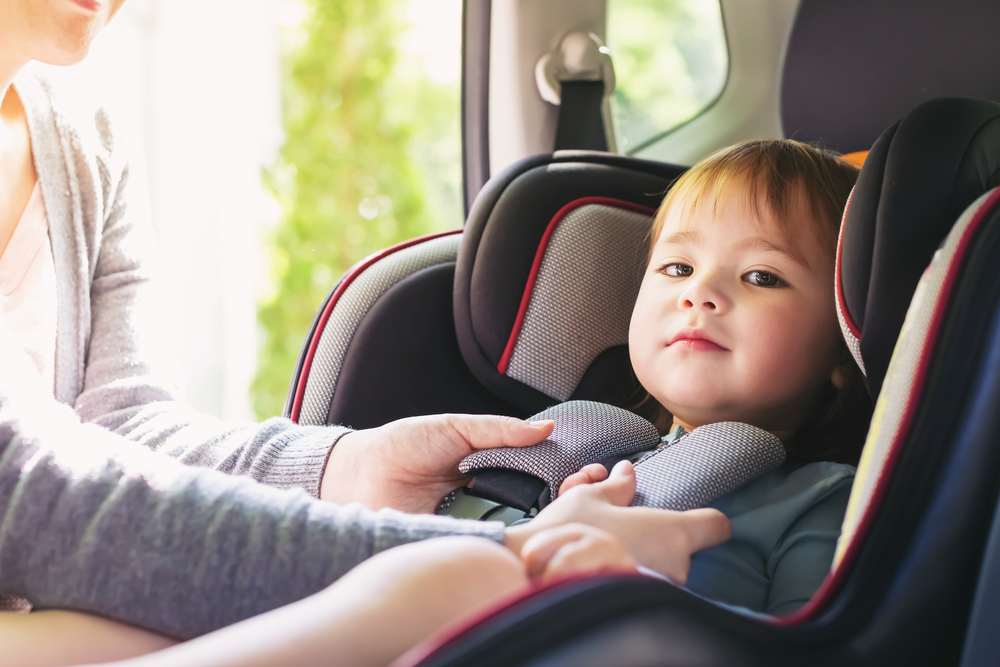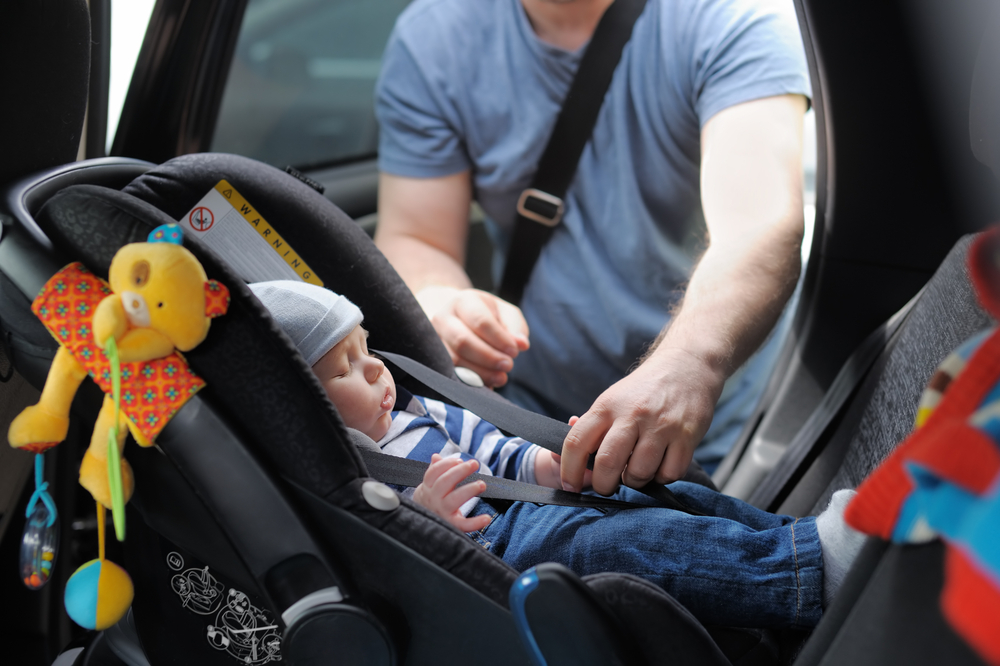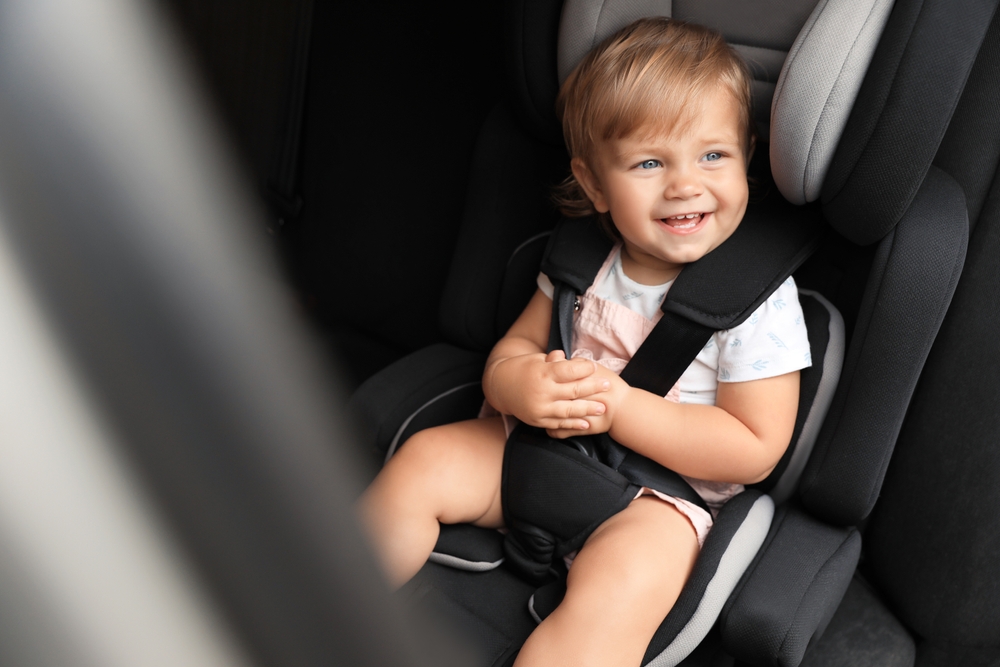Buckle up, we’ve got some important car seat safety tips for you! It’s a given that mums and dads worry when it comes to their little ones and strapping them into a vehicle is no different. Whether you’re nipping to the shop or going on a road trip, you’ll want to do everything possible to ensure they’re safe in the car.
As experts on child safety, all our products – from car seats to accessories – represent excellent safety records and great value so you can rest assured that your precious passenger is in good hands. However, the rules surrounding car seats can be confusing and there’s more to it than ensuring your child is properly strapped in, so we’ve pulled together everything you need to know before you strap your tot in and hit the road.
Car seat laws
First things first, let’s get down to business with car seat laws. According to the UK car seat law, all children must use a child car seat until they are 12 years old or 135cm tall, whichever comes first.
The only exception to this rule is if a child over the age of 3 years old is travelling in a vehicle that doesn’t have a car seat, such as a taxi, coach, or mini bus or for an unexpected, emergency journey. It is legally accepted that children can travel without a car seat as an exceptional circumstance but it is discouraged.
There are two different car seat regulations, R129 and R44. For the moment, both car seat regulations are legal in the UK so you can choose a car seat that complies with either of the two regulations.
Frequently asked car seat questions
There’s a lot to know when it comes to car seat safety so it’s understandable that you have questions. Here are the most frequently asked car seat safety questions.
Can a car seat be in the front seat?
Yes. However, it is much safer for a child to travel in the back seat and this is what we strongly recommend. But, if there is no alternative, such as if you’re travelling in a van or have a full car of car seats then you are legally allowed to travel with a car seat in the front seat.
For a rear-facing car seat in the front seat, you must make sure the passenger-side airbags are turned off. For a forward-facing car seat, you must move the passenger seat as far back as possible to maximise the distance between your little passenger and the airbag. Always consult car manual for advice on airbag on or off with a forward facing car seat in the front
The safest way to travel with a car seat is in the back seat, rearward facing so we recommend keeping them rearward facing for as long as possible.
Can I use a vehicle seat belt with a car seat?
There are two options to choose from when securing your car seat to a vehicle. The easiest option is to use ISOFIX but where this isn’t available, you can use a vehicle seat belt to secure a car seat.
You must make sure it is done in the right way and the seat belt has tension so the car seat doesn’t move. Use the car seat belt slots on your child’s car seat to feed the belt through, buckle up and create tension in the belt. The long belt usually goes at the back of the seat and the waist belt at the front.
What is ISOFIX?
ISOFIX is a car seat attachment system that uses mental connectors on a car seat to connect to the ISOFIX points of a vehicle. In 2014, it became a legal requirement that all new cars must be fitted with ISOFIX points, however, many cars made before 2014 have them.
You can check if your car has them by checking the handbook or by having a look in the back seat for the ISOFIX symbol. If your car has them, you will find the points behind the rear seats, in the joint between the back of the seat and the cushion.
ISOFIX was designed to make it easier to correctly install a car seat into a car, making it safer for children to travel. For some car seats, like infant carriers, you need a separate ISOFIX base to connect to the car, which the car seat clicks into. Other car seats have built-in ISOFIX connectors that are installed directly into the ISOFIX points in a vehicle.
How long should I keep my car seat rear-facing?
The answer to this question depends on which type of car seat you have, an R129 or an R44. R129 car seats (otherwise known as i-Size) should remain rearward facing until your child is at least 15 months old. For R44 car seats your child should remain reward-facing until at least 9 months old.
The most important thing to remember is that rearward facing, in the back seat, is the safest way to travel with your baby in their car seat. Try keeping them rear-facing for as long as possible.
Car seat regulations
The R129 standard was introduced in 2012 to make travel for babies and children even safer. It follows more detailed testing than R44 for improved head and neck protection. Current child car seat laws mean using either regulation car seat is legal. It is still safe to use an R44 car seat, but it is likely that this standard will be phased out over time for the R129.
Here is the breakdown of the differences between the two car seat regulations.
R129
With R129 (or i-Size) car seats, you must:
- Choose the correct size seat depending on your child’s height, not weight
- Use ISOFIX to secure the seat to a vehicle
- Keep your child rear-facing until at least 15 months old.
These seats don’t have specific categories, unlike R44 seats, but can be organised by height restrictions, as follows:
Phase 1 i-Size– is an infant car seat suitable from birth to 105cm (approximately 15 months). Some i-Size car seats are suitable from birth to around 4 years.
Phase 2 i-Size– is a children’s car suit suitable from 100-135cm (approximately 4-12 years).
We’ll let you in on a little secret – your little one’s height can actually be worked out using their clothes because labels usually have the height on them.
R44
With R44 car seats, you must:
- Choose the correct size car seat based on weight, not height, and these car seats are categorised by groups
- Fit the seat using ISOFIX or a vehicle seat belt
- Your child can travel forward facing after 9 months.
R44 car seat groups
Group 0– suitable for babies from birth to 10kg (approximately 6-9 months).
Group 0+– suitable for babies from birth to 13kg (approximately 12-15 months).
Group 0+/1– suitable for babies and toddlers from birth to 18kg (approximately 4 years).
Group 1– suitable for babies from 9-18kg (approximately 9 months to 4 years).
Group 0+/1/2– suitable for babies, toddlers and children from birth to 25kg (approximately 6 years).
Group 2– high back booster seat suitable for children from 15-25kg (approximately 4-6 years).
Group 0+/1/2/3– suitable for babies, toddlers and children from birth-36kg (approximately 11-12 years).
Group 2/3 – high back booster seat suitable for children from 15-36kg (approximately 4-11 years).
Group 3– a booster cushion suitable for children from 22-36kg (approximately 6-11 years).
Use these weight groups and i-Size size guides to determine when it is time to change your car seat to ensure they are safe and have the right size seat for them as they grow.
Have a look on our website at our range of car seats and choose the perfect seat for your little one’s height or weight. Whichever car seat you choose, make sure you choose one that complies with one of the two UK car seat regulations and you keep your child rear-facing for as long as possible.
Happy travels!



